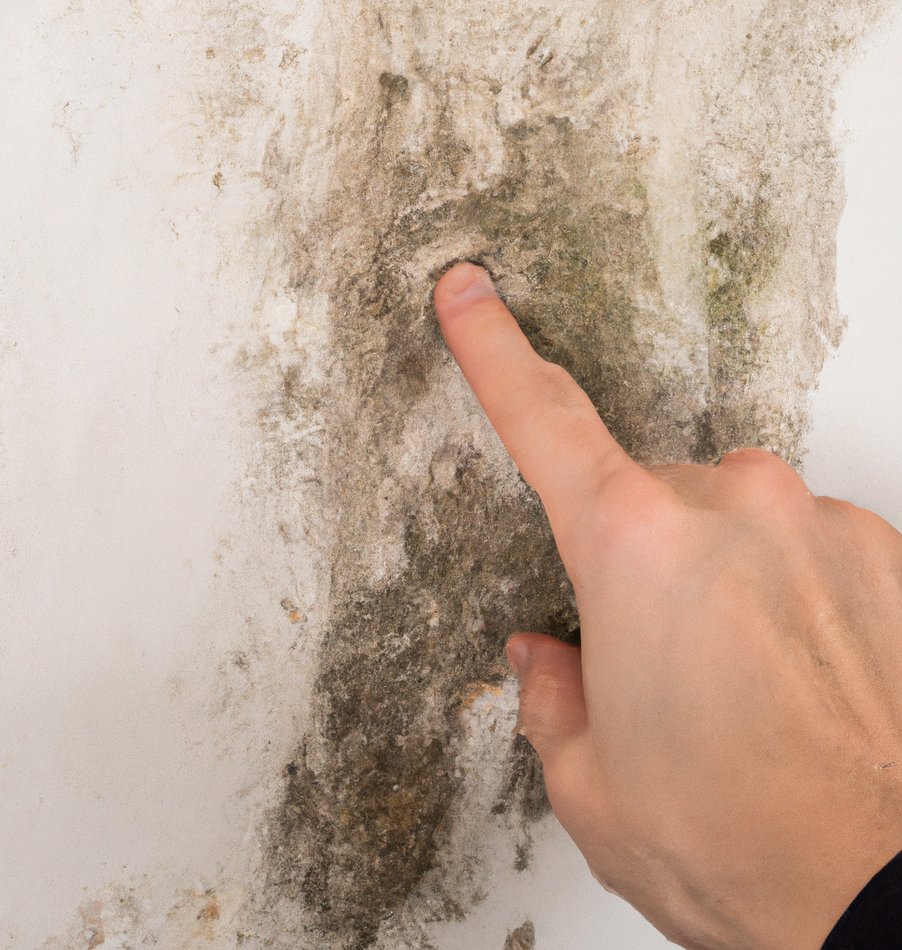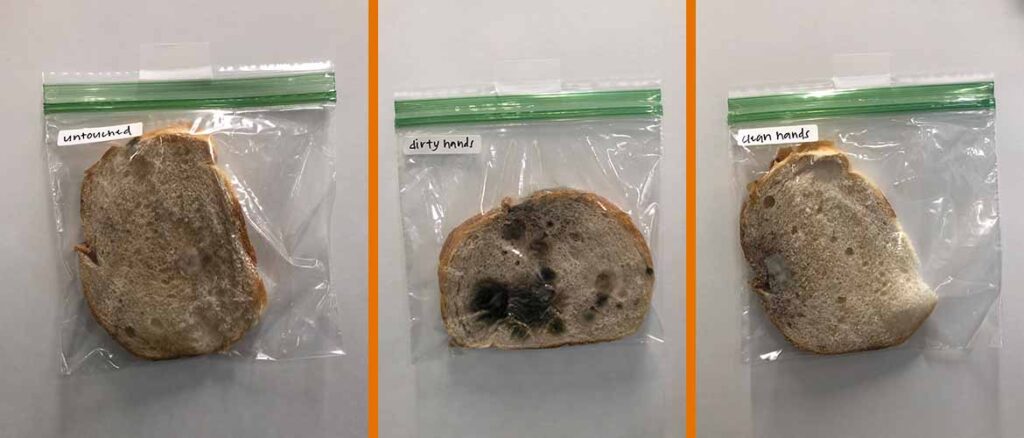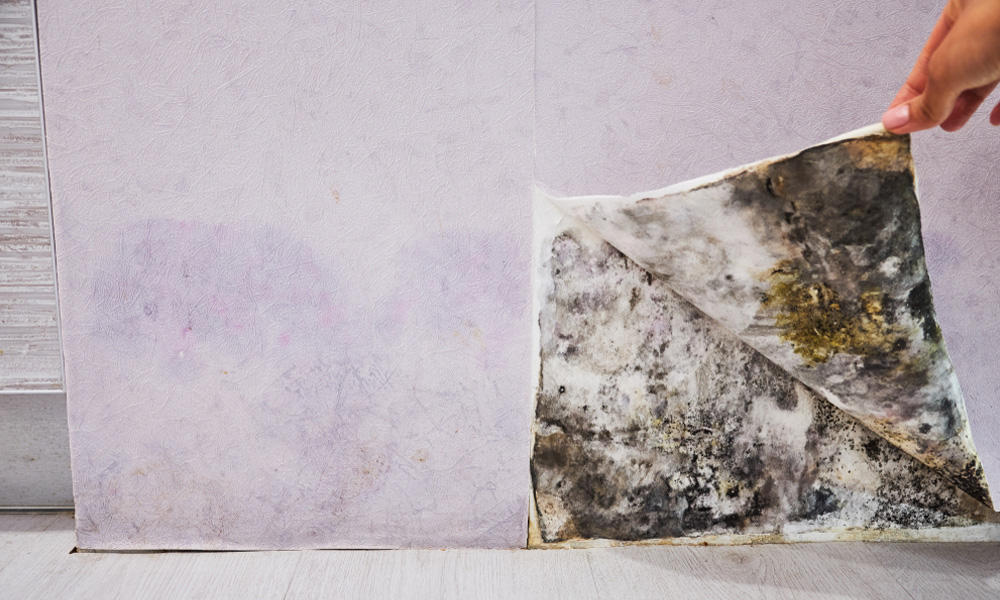Have you ever wondered if it’s safe to touch mold with your bare hands? Mold is a common household issue that can grow in damp and dark areas, and it’s important to know the risks associated with handling it. In this article, we will explore whether it’s safe to touch mold, discuss potential health concerns, and provide tips on how to properly handle mold to keep yourself and your home safe. As you read on, you’ll gain a better understanding of the precautions to take when encountering mold firsthand.

What is mold?
Definition of mold
Mold is a type of fungus that can grow on a variety of surfaces, including walls, floors, carpeting, and even food. It thrives in environments that are damp, dark, and humid. Mold reproduces by releasing tiny spores into the air, which can then settle on other surfaces and grow into new colonies.
Common types of mold
There are numerous types of mold that can be found in both indoor and outdoor environments. Some common types include Aspergillus, Cladosporium, Penicillium, and Alternaria. Each type of mold has its own unique appearance and characteristics, but they all share the ability to cause health issues when exposed to for prolonged periods.
Properties of mold
Mold has certain properties that make it both resilient and potentially harmful to human health. It thrives in moist environments and can grow rapidly if not addressed. Mold can release thousands of spores into the air, which can then be inhaled or come into contact with the skin. These spores can trigger allergic reactions, respiratory issues, and in some cases, toxic effects. Mold can also produce mycotoxins, which are toxic substances that can further contribute to health problems.
Health risks associated with mold exposure
Allergic reactions
For those who are allergic to mold, exposure can lead to a range of symptoms. These may include sneezing, coughing, itchy or watery eyes, nasal congestion, and skin irritation. These allergic reactions can vary in severity depending on the individual’s sensitivity to mold and the duration of exposure.
Respiratory issues
Mold can also cause respiratory issues, particularly for individuals with asthma or other underlying respiratory conditions. Inhaling mold spores can trigger asthma attacks or worsen existing respiratory symptoms. Prolonged exposure to mold can lead to chronic respiratory problems and may require medical intervention to manage.
Toxic effects
Certain types of mold, such as Stachybotrys chartarum (commonly known as toxic mold or black mold), can produce mycotoxins that are harmful to human health. Exposure to these mycotoxins can result in various symptoms, including headache, dizziness, fatigue, nausea, and even neurological issues. It is essential to exercise caution when dealing with toxic mold, as the consequences can be severe.
Immune system suppression
Extended exposure to mold can weaken the immune system, making individuals more susceptible to infections and illnesses. Mold can cause chronic inflammation in the body, leading to a compromised immune response. This can result in frequent illnesses, prolonged recovery times, and a general feeling of being unwell.

Factors to consider before touching mold
Identification of mold
Before determining whether it is safe to touch mold, it is crucial to accurately identify it. There are various visual cues and characteristics that can help distinguish mold from discoloration caused by other factors. Mold often appears fuzzy, discolored, and can have a musty odor. Proper identification is essential to understand the potential risks associated with a particular type of mold.
Location and extent of mold growth
Another factor to consider is the location and extent of mold growth. If the mold is isolated to a small area, it may be safer to handle compared to widespread growth throughout a room or building. The more extensive the mold infestation, the higher the likelihood of releasing a significant number of spores into the air, increasing the risk of exposure and potential health consequences.
Personal health conditions
Individuals with pre-existing health conditions, such as respiratory issues or compromised immune systems, should exercise extra caution when dealing with mold. Mold exposure can exacerbate these conditions and lead to more severe symptoms. Consulting a healthcare professional before attempting to touch mold is advisable for those who fall into this category.
Identifying mold
Visual inspection
One of the primary methods of identifying mold is through visual inspection. Mold colonies often appear as patches of discoloration on surfaces and can range in color from black, green, or even pink. The appearance of fuzziness or a powdery texture is also indicative of mold growth. However, visual inspection alone may not always be sufficient to determine the type of mold present.
Mold odor
Mold often emits a distinct musty odor, which can help identify its presence. If you detect a strong, unpleasant smell in a particular area, particularly in areas prone to moisture, it may indicate the presence of mold. However, it is worth noting that some types of mold may not produce a noticeable odor, making it important to rely on other identification methods as well.
Professional testing
In cases where mold identification is essential for health and safety reasons, it is recommended to seek professional testing. Certified mold inspectors can collect samples of the suspected mold and send them to a laboratory for analysis. This allows for accurate identification of the mold species and provides valuable information regarding the potential risks associated with handling or being exposed to the mold.

Types of mold you should not touch
Toxic mold
Toxic mold, such as Stachybotrys chartarum (black mold), should never be touched without appropriate precautions. This type of mold can produce mycotoxins that can be harmful to human health. Even minimal contact can increase the risk of exposure to these toxins, potentially leading to severe health issues.
Black mold
Black mold, commonly referred to as toxic mold, falls under the category of molds that shouldn’t be touched without proper precautions. It is notorious for producing mycotoxins, which pose health risks to humans. Black mold can often be identified by its black or dark green appearance and its slimy texture.
Potential dangers of touching mold with bare hands
Skin irritation or allergies
One of the immediate risks of touching mold without protective equipment is the potential for skin irritation or allergic reactions. Mold can cause redness, itchiness, and even rashes or hives on sensitive skin. Individuals with existing skin conditions or allergies may experience more severe reactions when in direct contact with mold.
Transferring mold spores
Touching mold with bare hands can easily disturb the mold colonies and cause the release of spores into the air. These spores can then contaminate other areas of the environment, potentially leading to a wider spread of mold growth. It is crucial to prevent the transfer of mold spores to prevent further contamination.
Ingestion or inhalation risks
When touching mold, there is a risk of inadvertently transferring mold spores to the mouth or nose. This can occur if you touch your face or other areas without washing your hands after handling mold. Ingesting or inhaling mold spores can lead to a range of health issues, including respiratory problems, digestive discomfort, and allergic reactions.

Safety precautions for handling mold
Wearing protective equipment
To minimize the risks associated with handling mold, it is essential to wear appropriate protective equipment. This may include gloves, goggles, and a mask or respirator. Gloves will prevent direct skin contact, goggles protect the eyes from mold spores, and a mask or respirator will prevent inhalation of airborne spores.
Avoiding direct contact
The best way to stay safe when handling mold is to avoid direct contact whenever possible. Use tools such as a brush or scraper to remove mold rather than using your bare hands. This minimizes the risk of skin irritation and reduces the chance of transferring mold spores.
Proper hygiene practices
Maintaining good hygiene practices is crucial when handling mold. After coming into contact with mold, immediately wash your hands thoroughly with soap and water. This will help remove any lingering mold spores and prevent accidental ingestion or further spread of the mold.
Steps to take if you accidentally touch mold
Wash affected area immediately
If you accidentally touch mold with your bare hands, it is important to wash the affected area immediately. Use warm water and soap to thoroughly clean the skin and remove any mold spores that may be present. Pay extra attention to areas such as the hands, face, and arms. It is also advisable to change into clean clothes to avoid potential cross-contamination.
Monitor for any adverse reactions
After touching mold, monitor your body for any adverse reactions over the following hours or days. Pay attention to any changes in your skin, respiratory system, or general well-being. If you notice any unusual symptoms or experience discomfort, it is advisable to seek medical attention.
Seek medical attention when necessary
If you develop severe symptoms or experience a severe allergic reaction after touching mold, it is crucial to seek medical attention promptly. A healthcare professional can assess your condition, provide appropriate treatment if necessary, and offer guidance on managing any potential health risks associated with mold exposure.

When it may be safe to touch mold
Non-toxic mold
Some types of mold, particularly non-toxic varieties, may be safe to touch with bare hands. These molds typically pose fewer health risks and are less likely to cause severe allergic reactions or other health issues. However, it is important to exercise caution and wear protective equipment even when dealing with non-toxic mold.
Small and contained mold growth
If the mold growth is small and contained, it may be safer to handle, provided that appropriate precautions are taken. However, it is essential to closely monitor the area and ensure that the mold does not spread or worsen. If the mold growth increases or becomes widespread, it is advisable to seek professional assistance.
No existing health concerns
If you are in good health and do not have any pre-existing respiratory issues or compromised immune system, touching mold in certain situations may be relatively safe. However, even in these cases, it is crucial to follow proper safety protocols and minimize direct contact to reduce the risk of exposure to mold spores.
Conclusion
While it may be tempting to touch mold with bare hands, it is generally not recommended due to the potential health risks involved. Mold exposure can result in allergic reactions, respiratory issues, toxic effects, and immune system suppression. Factors such as the identification of mold, location of mold growth, and personal health conditions should be considered before attempting to touch it. Whenever possible, it is advisable to rely on professional testing and assistance to handle mold safely. If you accidentally touch mold, wash the affected area immediately, monitor for any adverse reactions, and seek medical attention if necessary. By taking proper precautions and following safety guidelines, you can minimize the risks associated with mold exposure and protect your health.